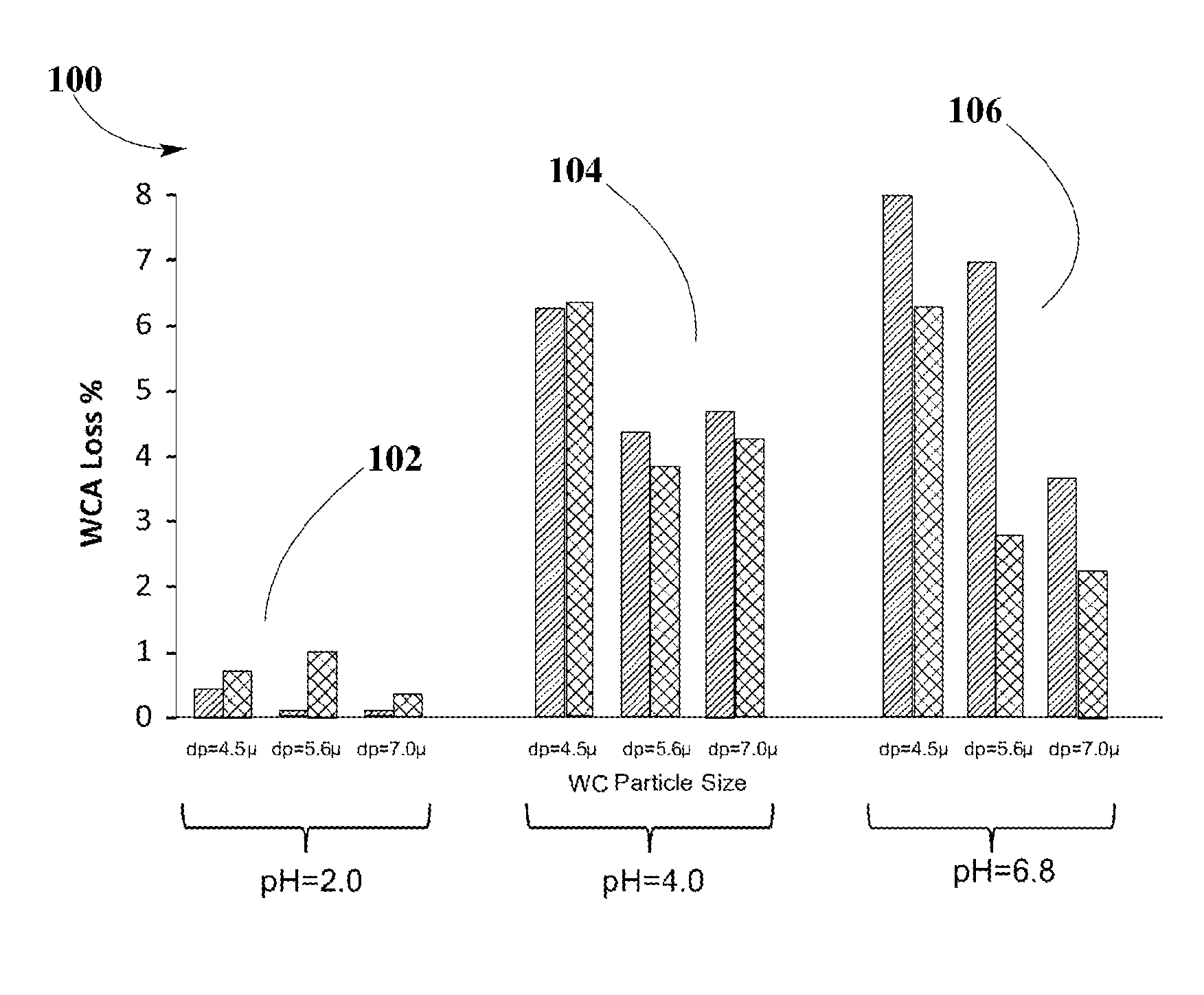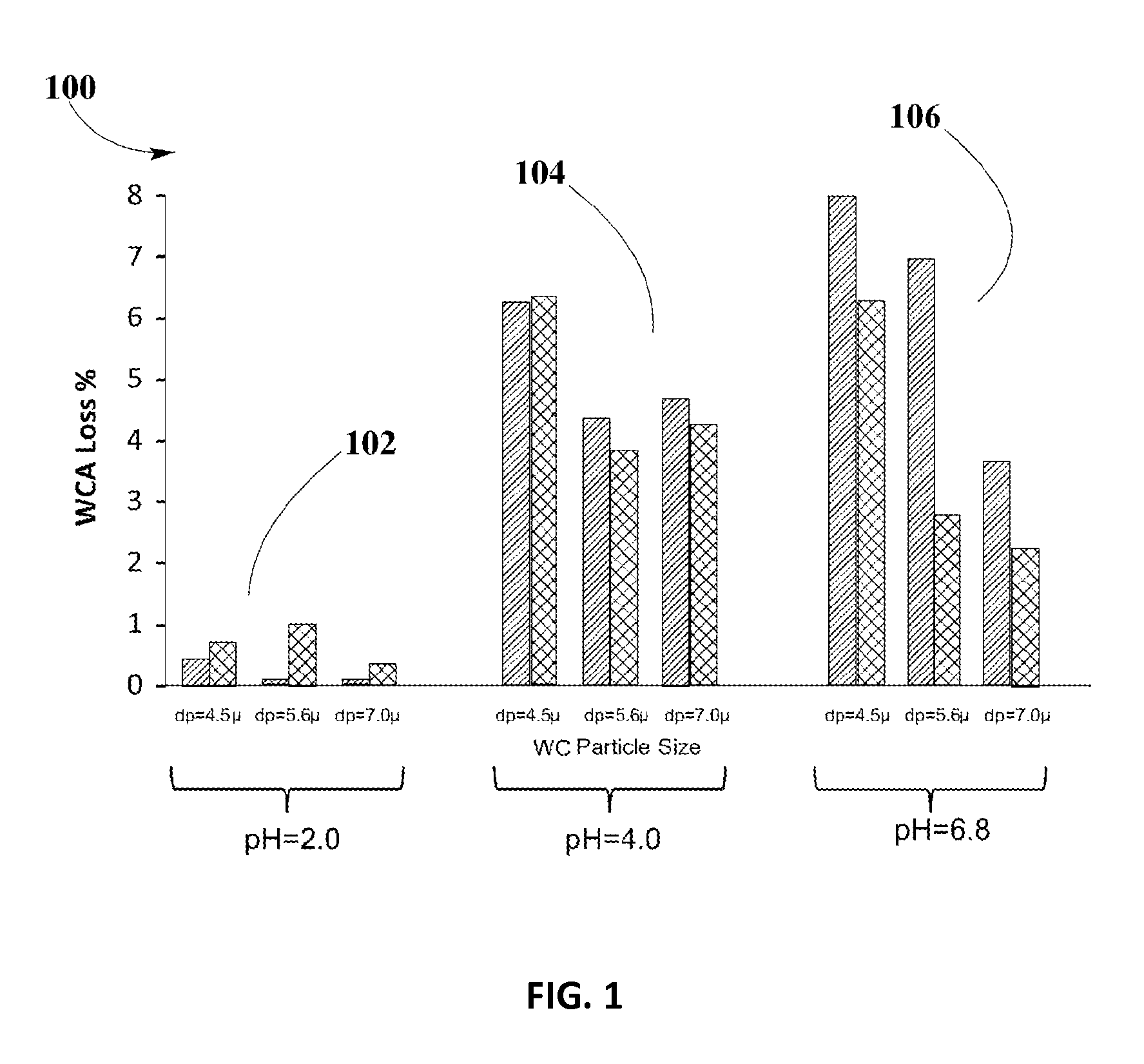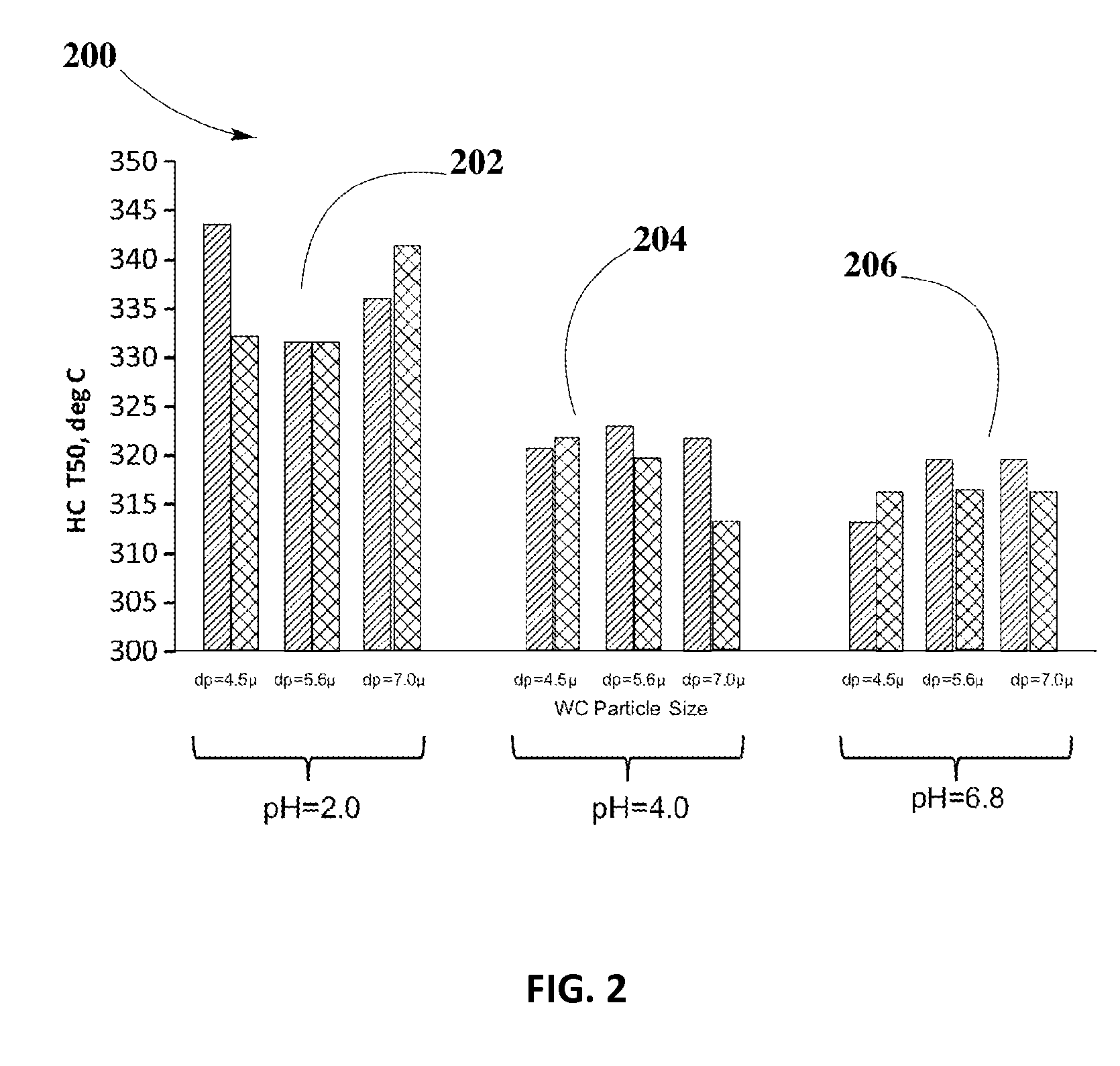Optimization of washcoat adhesion of zero-PGM catalyst on metallic substrates
a technology of zero-pgm catalyst and washcoat, which is applied in the direction of physical/chemical process catalyst, metal/metal-oxide/metal-hydroxide catalyst, separation process, etc., to achieve the effect of improving the performance and activity of the zpgm catalyst system and reducing the loss of wca
- Summary
- Abstract
- Description
- Claims
- Application Information
AI Technical Summary
Benefits of technology
Problems solved by technology
Method used
Image
Examples
example # 1
Example #1
Effect of Varying the pH of Overcoat Slurry Containing ZPGM
[0035]Example #1 may illustrate the effect of varying pH of OC slurry for catalyst samples on a metallic substrate of a dimension of D40 mm×L90 mm, 300 CPSI. Samples may be prepared to include WC loading of 120 g / L. WC may include any type of alumina or doped alumina. In an embodiment, OC may have a total loading of 120 g / L. OC total loading may include any type of alumina or doped alumina, OSM, and Cu loading of 10 g / L to 15 g / L and Ce loading of 12 g / L to 18 g / L.
[0036]The influence of Cu dispersion on WCA may be examined by varying the by pH of OC slurry. The pH of OC slurry may vary by adjusting the amount of base solution added to adjust the rheology of slurry. Some examples of compounds that can be used to adjust the rheology may include ammonium hydroxide, aluminum hydroxide, tetraethyl ammonium hydroxide, other tetralkyl ammonium salts, ammonium acetate, ammonium citrate and other suitable compounds. In pres...
example # 2
Example #2
Effect of Presence and Absence of Binder in OC Slurry Containing ZPGM
[0037]Example #2 may illustrate the effect of adding a binder to OC of catalyst samples on a metallic substrate of dimension of D40 mm×L90 mm, 300 CPSI. Catalyst samples may be prepared according to same composition as described in example #1, including variations of pH values of 2.0, 4.0, and 6.8. The absence or presence of a binder in the OC may provide the influence of the alumina-based binder on the adhesion of the OC layer. An alumina type binder is used in the samples containing binder. The resulting % of WCA loss from the absence or presence of binder may be compared and optimal result indicating a reduction of WCA loss may be registered relative to the established acceptable range of 3% WCA loss threshold and catalyst activity examined at HC T50 for each variation.
example # 3
Example #3
Effect of Particle Size of Washcoat Slurry
[0038]Example #3 may illustrate the effect of varying WC particle size in catalyst samples on a metallic substrate of dimension D40 mm×L90 mm, 300 CPSI, prepared according to same composition as described in example #1, including variations of pH values of 2.0, 4.0, and 6.8, and in absence or presence of a binder in the OC slurry containing ZPGM.
[0039]The lack of the cohesion between WC and OC particles may result in a high percentage of WCA loss. In this example, WC particle size, d50, in washcoat slurry of alumina may be varied to 4.5 μm, 5.6 μm, and 7.0 μm. Resulting % WCA loss from variations of WC particle size may be compared, including variations of pH and absence or presence of a binder in the OC. This comparison may provide desirable level of % WCA loss and optimal catalyst activity at HC T50.
[0040]According to principles in the present disclosure, results of reduction of WCA loss and enhanced catalyst activity at HC T50 m...
PUM
| Property | Measurement | Unit |
|---|---|---|
| particle size | aaaaa | aaaaa |
| particle size | aaaaa | aaaaa |
| particle size | aaaaa | aaaaa |
Abstract
Description
Claims
Application Information
 Login to View More
Login to View More - R&D
- Intellectual Property
- Life Sciences
- Materials
- Tech Scout
- Unparalleled Data Quality
- Higher Quality Content
- 60% Fewer Hallucinations
Browse by: Latest US Patents, China's latest patents, Technical Efficacy Thesaurus, Application Domain, Technology Topic, Popular Technical Reports.
© 2025 PatSnap. All rights reserved.Legal|Privacy policy|Modern Slavery Act Transparency Statement|Sitemap|About US| Contact US: help@patsnap.com



